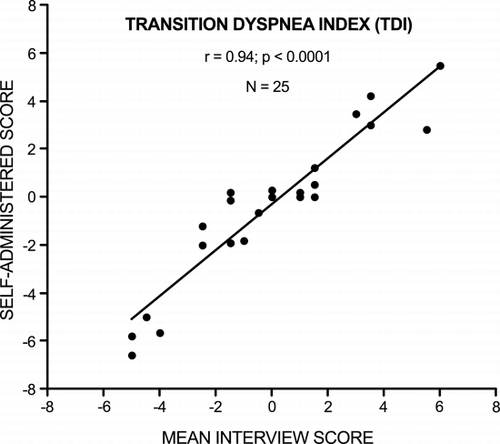Figures & data
Table 1. Major Changes Made in the SAC Versions of the BDI and TDI from the Original Instruments
Figure 1. Example of the self‐administered computerized version for the “functional impairment” component (labeled “activities” on the graph) of the transition dyspnea index (TDI). By pressing the up or down arrow on the keyboard, the patient could move the vertical bar up (for improvement) or down (for deterioration) to represent a change in dyspnea. An insert is present in the left portion of the figure which reminds the patient of his/her selection at baseline. (Full color version available online.)

Table 2. Grades and Descriptors for the Practice Session Related to the Experience of Being Tired
Table 3. Grades and Descriptors for each Component of the Self‐Administered and Computerized Version of the BDI
Table 4. Correlations Between the BDI/TDI Total Scores and Lung Function

